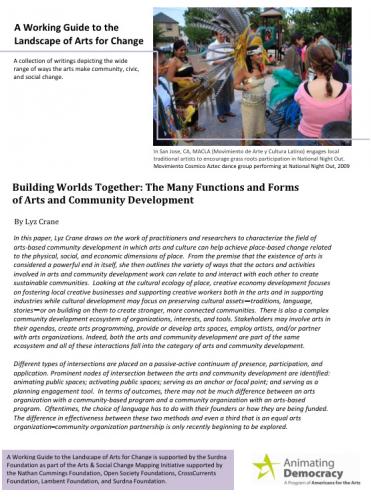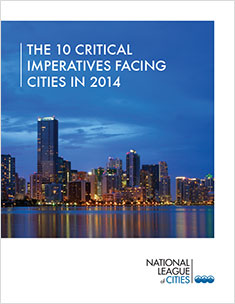An aging revolution is changing the world, demanding that we look at our older years in a fresh way. A new book edited by Paul Irving, member of the Partners Aging Advisory Body and president of the Milken Institute, moves beyond the stereotypes of dependency and decline to do just that.
Exploring the vast potential of longer lives, The Upside of Aging: How Long Life is Changing the World of Health, Work, Innovation, Policy, and Purpose reveals how we can meet the challenges that accompany later life with positive solutions for people of all ages.
Irving and a distinguished group of contributing authors reveal the remarkable upside for health, work and entrepreneurship, volunteerism, innovation and education, as longevity and declining birth rates create a mature population of unprecedented size and significance.
“In the past century, discovery and innovation have enabled longevity that would be unimaginable to our forebears,” says Irving. “Increased longevity has contributed to unprecedented global economic growth and new opportunities for personal fulfillment that previous generations could only dream of.”
With a positive call to action, the book suggests new ways of thinking about aging. Among topics examined are:
Read more »
On Thursday, the National League of Cities released The 10 Critical Imperatives Facing Cities in 2014, its annual report highlighting ten of the most pressing issues facing cities across the United States. Partners board member and incoming NLC President, Salt Lake City Mayor Ralph Becker explained during the report's unveiling, "This is not a wish list just of cities. This is a wish list of the people who live in America. That’s 80 percent of the population of America that’s being represented through us."
The ten items on the list were:
- Fragile Fiscal Health
- Deteriorating Transportation Infrastructure
- The Shrinking Middle Class
- Inadequate Access to Higher Education
- The Need for Affordable Housing
- A Less-Than-Welcoming Return for Veterans
- Gang Violence
- A Broken Immigration System
- Climate Change and Extreme Weather
- Lack of Public Trust
Click here to read the full report from NLC, which includes an overview of initiatives being taken by cities in their own efforts to tackle these ten challenges and create more livable communities for their residents.
Read more »
Terms:Community Building, Community Development, Downtown Development, Economic Development, Education, Environment, Health & Wellness, Housing, Immigration, Neighborhood Revitalization, Other Reports/Publications, Placemaking, Public-Private Partnerships, Transportation, Urban
Lyz Crane draws on the work of practitioners and researchers to characterize the field of arts-based community development in which arts and culture can help achieve place based change related to the physical, social, and economic dimensions of place. This paper examines the premise that the existence of arts is considered a powerful end in itself, Crane then outlines the variety of ways that the actors and activities involved in arts and community development work can relate to and interact with each other to create sustainable communities. Looking at the cultural ecology of place, creative economy development focuses on fostering local creative businesses and supporting creative workers both in the arts and in supporting industries while cultural development may focus on preserving cultural assets—traditions, language, stories—or on building on them to create stronger, more connected communities. There is also a complex community development ecosystem of organizations, interests, and tools. Stakeholders may involve arts in their agendas, create arts programming, provide or develop arts spaces, employ artists, and/or partner with arts organizations. Indeed, both the arts and community development are part of the same ecosystem and all of these  interactions fall into the category of arts and community development. interactions fall into the category of arts and community development.
Crane places different types of intersections on a passive-active continuum of presence, participation, and application. Prominent nodes of intersection between the arts and community development are identified: animating public spaces; activating public spaces; serving as an anchor or focal point; and serving as a planning engagement tool. Crane points out that, in terms of outcomes, there may not be much difference between an arts organization with a community-based program and a community organization with an arts-based program. Oftentimes, the choice of language has to do with their founders or how they are being funded. The difference in effectiveness between these two methods and even a third that is an equal arts organization–community organization partnership is only recently beginning to be explored.
Click here to download the whole document.
Read more »
Terms:2012, Arts & Culture, Business, CBC Report/Publication, Community Building, Community Development, Community Engagement, Creative Economy, Cultural Institutions, Featured, Other Reports/Publications, Placemaking, Public Art, Public-Private Partnerships
This year, the first of the Baby Boomers turn 65. But this milestone birthday may not be so eagerly celebrated, as our nation realizes the drastic impact this huge generation will have on our communities. Six years ago, the first edition of “The Maturing of America,” a report undertaken by the National Association of Area Agencies on Aging with groups representing local governments and city planners, found that most communities were not properly prepared for the impact of an increasing aging population: the age 65-plus population is expected to double by 2030.
Read more »
More than 35 million Americans are over 65, and that population is rising at an unprecedented rate. The MetLife Mature Market Institute recently responded to this shift with “The MetLife Report on Aging in Place 2.0: Rethinking Solutions to the Home Care Challenge.” The report serves as a “blueprint” for helping our growing population of older adults stay in their homes, or, “age in place”, through adjustments to residential design, health care, and other services. Click here to read the full news release (PDF). Or Download the Report here.
Read more »
|
|




